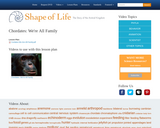
Students watch the video "Chordates: We're All Family" and answer a series of questions about adaptations and evolution.
- Subject:
- Science
- Material Type:
- Lesson Plan
- Provider:
- Shape of Life
- Date Added:
- 08/22/2018

Students watch the video "Chordates: We're All Family" and answer a series of questions about adaptations and evolution.
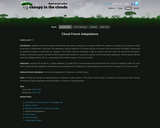
Students will examine environmental factors that make surviving in an ecosystem difficult for organisms, focusing on the tropical montane cloud forest of Monteverde, Costa Rica. The adaptations used by organisms to increase chances of survival in the forest will also be studied.

This unit will introduce students to many of the complex issues surrounding coral reefs. The 8 investigations in this unit incorporate some of the most current research data and visualizations available. Using data from a variety of sources, students will learn about the influences of both humans and the environment on the health and vitality of coral reefs.

Students create a marine ecosystem and describe the adaptive, trophic, and symbiotic relationships between the biotic and abiotic components of the ecosystem.

This video describes how birds-of-paradise use dance to attract mates.
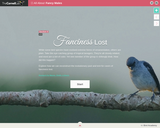
In this interactive, students explore evolutionary relationships between tanagers. They will investigate why one species is much drabber in color than the others and determine whether this is a case of fanciness lost.
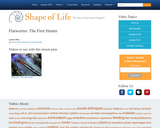
Students watch the video "Flatworms: The First Hunter" and answer a series of questions about adaptations and evolution.

Students will understand the pattern of genetic variation among humans and how variation has been introduced into our species over time. As a culminating activity, students will pick a trait variation to research and report.
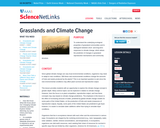
This lesson provides students with an opportunity to explore the climate change concept in greater depth. The focus is on plant competition, reproductive output, and how these concepts may vary based on climate change predictions. The emphasis in this lesson is the effect of increasing amounts of water, predicted by global climate change models for some parts of the United States, on the production of fruits and seeds (measures of reproductive output).
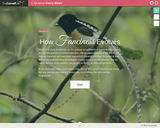
This video describes how natural and sexual selection can shape the way animals look and act.
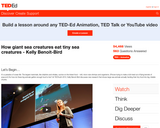
This brief video lesson discusses how large sea animals collect enough food to sustain them. Discussion/assessment questions and suggested supplemental resources are also included.

This brief video shows the wide range of reproductive adaptations and strategies that contribute to the success of common invertebrates in the ocean. Discussion/assessment questions and suggested supplemental resources are included.

Students to read detailed scientific passages and explain how an understanding of specfifc icefish adaptations might lead to a treatment or cure for human disorders, such as osteoporosis and anemia.
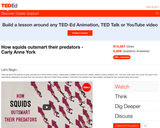
This brief video lesson describes the squid's most extraordinary adaptations that have evolved to help them thwart predators. Discussion/assessment questions and suggested supplemental resources are also included.
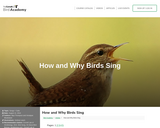
This article outlines the nine most important things to know about bird song and includes audio examples.
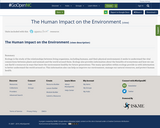
Ecology is the study of the relationships between living organisms, including humans, and their physical environment; it seeks to understand the vital connections between plants and animals and the world around them. Ecology also provides information about the benefits of ecosystems and how we can use Earth’s resources in ways that leave the environment healthy for future generations. The many specialties within ecology provide us with information to better understand the world around us. This information also can help us improve our environment, manage our natural resources, and protect human health.

In this lesson, students will interpret data on the evolution of plants and the change in the atmosphere, and construct a drawn model of photosynthesis.
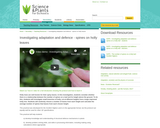
In this investigation, students consider whether there is a relationship between the number of spines on a holly leaf and its height above the ground.

This video describes how Herring and Great Blac-backed gulls in a crowded breeding colony on Maine's Appledore Island coexist. The signals that the gulls have evolved to prevent violent clashes are also discussed.

Students are asked to formulate a hypothesis, and collect and analyze real research data to understand how quickly natural selection can act on a population. This activity supports the film The Origin of Species: Lizards in an Evolutionary Tree.